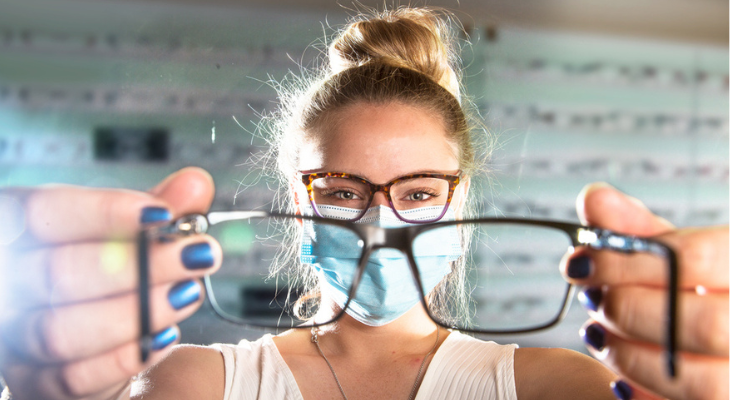
Is Your Prescription Up-to-Date? What You Need to Know About When and Why You Should See Your Optometrist
Walking out of the optometrist's office with a new pair of eyeglasses or contact lenses is literally an eye-opening experience. The world around you no longer looks fuzzy, and the words on your digital screens suddenly become crisp and clear. Like many people, you may have waited longer than necessary to see the eye doctor in the past. So how often should you pay a visit to the optometrist?
When to Schedule a Vision Checkup
The American Optometric Association offers several age-related recommendations for eye exams, including:
- Once at 6 to 12 Months of Age
- At Least One Exam Between Ages 3 - 5
- Just Before Starting First Grade
- Every Year Between 6 - 17
- Every Two Years for People 18 - 64
- Every Year for People 65 and Older
Keep in mind that these are just general recommendations. You may need to see the optometrist more often due to:
- Blurry Vision. If things start to look a little blurry, don't wait for your next checkup to see the eye doctor. Although your eyesight usually becomes more stable when you're an adult, you may still experience vision changes that happen well before your next regular eye exam. Prescription changes are particularly common in children. In fact, your son or daughter's vision may change more than once during some years.
- Pain or Sudden Vision Issues. If your eye hurts or you notice a sudden change in your vision, let your eye doctor know. Call your optometrist immediately or go to the emergency room if your vision suddenly becomes blurry, your eye is extremely painful, or you notice dark or blank spots in your vision. If you have a serious eye condition or disease, such as a detached retina or angle-closure glaucoma, prompt treatment will help protect your eyesight.
- An Eye Injury. Don't wait to see if your eye gets better on its own. Call your eye doctor and ask if you need to be seen if you've poked, punctured, or cut your eye, or came in contact with chemicals. Delaying treatment could result in partial or complete vision loss in some cases.
- A Dwindling Supply of Contact Lenses or A Desire for New Eyeglasses. Prescriptions for eyeglasses and contact lenses are only good for one year. If you're running low on contacts, or you'd like to try a new frame style, you'll need to schedule an appointment with the optometrist.
- Eye Disease. Your eye doctor may need to see you more frequently if you have an eye disease, such as diabetic retinopathy, glaucoma or macular degeneration,
- A Family History of Eye Disease. If others in your family have an eye disease, you may be at increased risk for developing the same disease. Regular eye exams make it possible to detect early changes and start treatment as soon as possible.
Other Reasons to See the Eye Doctor
You may also need to visit the optometrist if you:
- Find It Hard to Read the Small Print. After age 40, most people develop presbyopia, an age-related refractive error that makes it difficult to see close objects clearly. Presbyopia happens when the lens in your eye becomes less flexible and can't adjust as quickly when you shift your focus from far to near objects. Fortunately, reading glasses, contact lenses or refractive surgery like LASIK will help you see clearly once again.
- Participate in Sports. Sports goggles protect your eyes from injury when playing sports or swimming. If you normally wear corrective lenses, ask your eye doctor about fitting you with a pair of prescription goggles. In addition to providing clear vision, prescription goggles are shatterproof and can be tinted to reduce glare or enhance contrast.
- Use Computers. Eyestrain, a common complaint among people who use digital devices, causes blurred vision, dry eyes, headaches, and neck and shoulder pain. According to a Vision Council survey, almost 60% percent of American report at least one symptom of digital eyestrain. If eyestrain is a problem for you, wearing computer glasses can be helpful. The glasses provide clear vision at the optimal viewing distance for your screen and reduce glare and blue light transmission.
Do you need to pay a visit to the optometrist? Call us to schedule a convenient appointment.
Sources:
American Optometric Association: Comprehensive Eye Exams
https://www.aoa.org/healthy-eyes/caring-for-your-eyes/eye-exams?sso=y
Vision Council: Vision Council Shines Light on Protecting Sight – And Health – in a Multi-Screen Era, 1/7/2019
All About Vision: Questions to Ask Your Eye Doctor, 1/21
https://www.allaboutvision.com/eye-exam/ask-my-eye-doctor/
American Academy of Ophthalmology: What Is Presbyopia?, 1/7/2019
